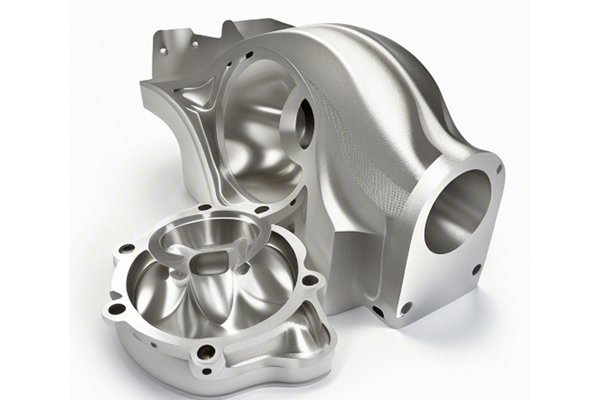Have you ever wondered how engineers transform raw materials into intricate components that fit together seamlessly? In today’s fast-paced manufacturing landscape, one of the most efficient ways to achieve this is through CNC (Computer Numerical Control) turning. In fact, CNC turning can produce precision components with tolerances as tight as ±0.001 inches. So, how does this technology play a crucial role in prototyping small precision parts? Let’s dive in!
to CNC Turning
CNC turning is a subtractive manufacturing process that utilizes a rotating workpiece and a fixed cutting tool to remove material. The precise control of computer programming allows for the creation of complex shapes and features with high accuracy. This method is integral in producing everything from automotive components to delicate electronic parts. With the rise of industries demanding rapid prototyping and high-quality production methods, CNC turning has become a game-changer.
Importance of CNC Turning in Prototyping
How CNC Turning Works
Understanding how CNC turning operates is crucial for leveraging it in prototyping.
Prototyping starts with a detailed design, often created using CAD software. This design is then converted into a CNC machine-readable format (often .dxf or .stl files). Selection of suitable software is essential, and some popular options include SolidWorks for modeling and Mastercam for machine programming.
Once the design is ready, the CNC turning machine must be set up. This includes:
Once everything is set up, the CNC machine can begin the turning process:
Post-processing may include sanding, polishing, or surface finishing treatments to enhance the overall quality of the component.
Quality control is essential in CNC machining. The finished prototypes undergo rigorous testing, using coordinate measuring machines (CMM) or laser scanning for precise measurements. This ensures that all specifications and tolerances are met before going into production.
Advantages of CNC Turning for Prototyping Small Precision Parts
A. Accuracy and Precision
CNC turning machines can maintain tight tolerances, which is essential for applications that require a high degree of precision. With the ability to repeat operations consistently, CNC turning ensures that each prototype meets the designated specifications.

B. Complex Geometries
CNC turning is not just limited to simple cylindrical shapes. With advanced programming and tooling, manufacturers can create complex geometries that were previously time-consuming or impossible with traditional machining methods.
C. Reduced Lead Times
In industries where time-to-market is a competitive advantage, the ability to produce prototypes quickly through CNC turning can significantly reduce lead times. This agility allows companies to adapt faster to market demands and enhance productivity.
D. Material Versatility
CNC turning can process various materials, including metals, plastics, and composites. This versatility enables manufacturers to prototype parts using the same material that will be utilized in production, allowing for accurate testing and validation.
E. Scalability
Once a prototype is validated, switching to full-scale production is seamless. The same CNC turning setup can be used for small runs or large batches, making it an attractive option for businesses looking to innovate without investing in new equipment.
Challenges and Solutions in CNC Turning Prototyping
While CNC turning is versatile, choosing the right material for a prototype is critical. The wrong material can lead to poor performance in production.
Solution: Use advanced material selection tools to compare different materials based on properties like tensile strength, machinability, and cost.
Setting up a CNC turning machine can be time-consuming, particularly for small runs.
Solution: Utilize pre-existing programs for similar parts when applicable to streamline setup times. Additionally, companies can invest in rapid prototyping systems specifically designed for quick turnarounds.
Programming CNC machines can be intricate, especially for advanced features and geometries.
Solution: Provide your staff with ongoing training in CAD and CAM software. Hiring skilled machinists familiar with CNC programming can also reduce complexity and improve efficiency.
Although CNC turning can be cost-effective, the initial investment in machinery and software can be high.
Solution: Initially focus on prototyping projects where specifications can lead to long-term production contracts, thereby justifying costs.
Case Studies: Effective Use of CNC Turning in Prototyping
Case Study 1: Automotive Component Prototyping
A leading automotive manufacturer recently required a high-precision prototype for a new engine component. By employing CNC turning, they reduced their prototyping cycle time by 50%, enabling them to meet project deadlines. The accuracy of the prototypes allowed for direct testing against stringent specifications, leading to a completely functional first prototype.
Case Study 2: Aerospace Industry
An aerospace engineering firm faced challenges in developing a new turbine blade prototype. Using CNC turning allowed them to produce lightweight, complex geometries efficiently while maintaining tight tolerances. This innovation led to better fuel efficiency in subsequent aircraft designs, demonstrating the transformative potential of CNC technology in high-stakes industries.
CNC turning is not just a manufacturing process; it’s a powerful tool for innovation and efficiency in prototyping small precision parts. As we’ve explored, its speed, accuracy, compatibility with various materials, and ability to create complex geometries set it apart from traditional manufacturing methods.
Embracing CNC turning technology can provide companies with a competitive edge in today’s rapid market environment. Whether you are involved in automotive, aerospace, or any other precision-based industry, understanding and leveraging CNC turning will enable you to meet modern manufacturing demands effectively.
In a world where quality, speed, and efficiency reign supreme, adapting your processes to incorporate CNC turning is not just an option; it’s a necessity. As you contemplate your next steps in design and manufacturing, remember that CNC turning could be the key to unlocking your prototyping potential.






